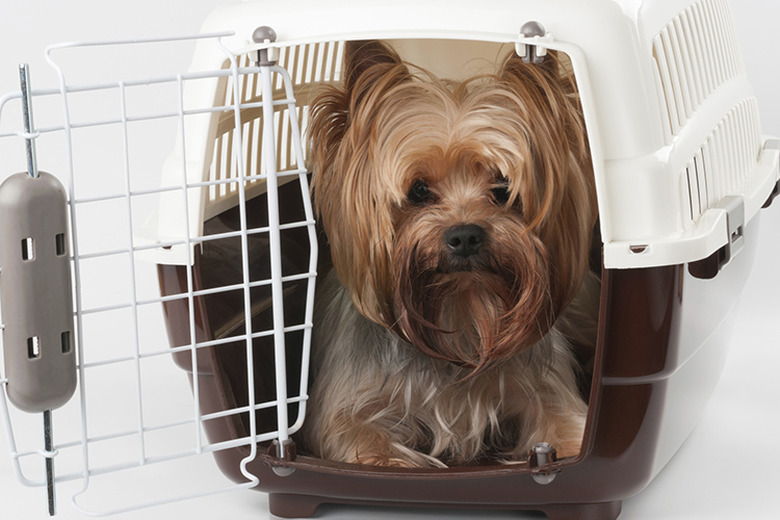Stop A Dog From Moving His Crate Around
Dogs are naturally den dwellers and the use of a crate or kennel provides a safe and secure sanctuary for him. They also are an effective tool when house-training a new puppy. However, if you are coming home to find your dog and his crate have gone for a trip across the room, there may be an underlying problem that needs to be addressed. Here are a few tips that should help.
Tip #1 - Evaluate the location of the cage. If you have moved furniture or even changed his cage location, he may be trying to tell you that he felt more comfortable in his old surroundings. Like people, not all dogs adjust well to change and this may be his way of letting you know he is feeling insecure about the change. If possible, move him back to his original location. If it is new furniture or some other change, make sure that he has things familiar to him, like a favorite toy, in his cage with him.
Tip #2 -Reduce the amount of time you are leaving him in his cage. If he has been in there longer than the recommended time, he may need to go to the bathroom and is traveling to try to get there. Dogs naturally do not want to go to the bathroom in their own space, so he instantly does not want to mess his cage. If you are gone too long, he may be trying to get out because he has to go.
Tip #3 -Take him for a walk or share playtime together before placing him in his cage. If you have an active dog, he may have too much energy. Giving him plenty of exercise time will use up that energy and he will want to rest up while you are gone so he is ready to play again.
Tip #4 -Place his cage on a slip-proof mat or carpet. If you find, even after addressing all these other possible causes, that he still is moving his cage, it may not be a problem at all. If his cage is on a slippery floor, he may be moving it when he gets up to stretch or even as he runs in his dreams.
Caution: For your dog's safety, make sure you remove any collars or harnesses before placing them in the cage. This is especially true if they are moving the cage. Something around their neck creates a risk of strangulation if it becomes stuck on something.
By Deborah Lundin
Reference
The Humane Society of the United States: Crate Training
About the Author
Deborah Lundin is a professional writer with more than 20 years of experience in the medical field and as a small business owner. She studied medical science and sociology at Northern Illinois University. Her passions and interests include fitness, health, healthy eating, children and pets.
